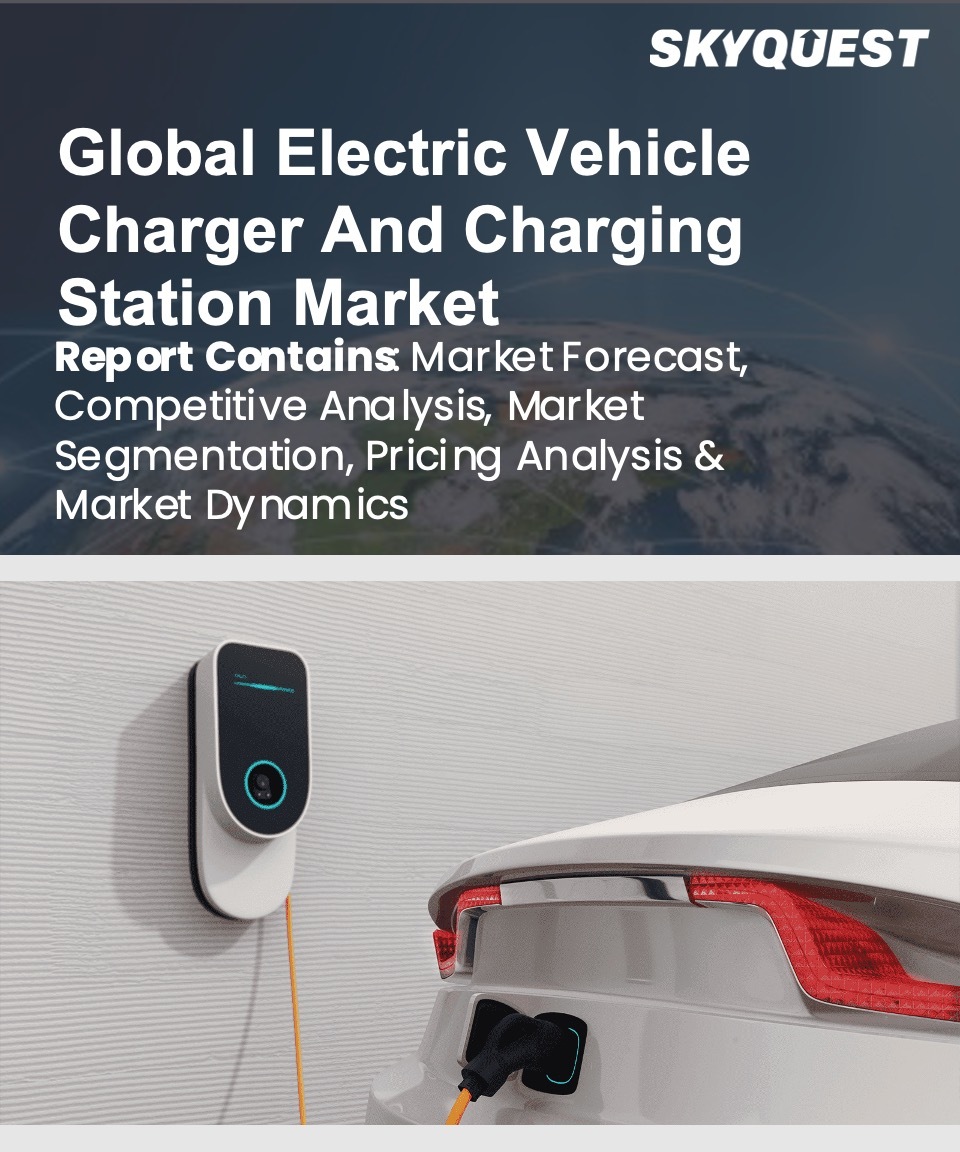
Report ID: SQMIG25A2031

Report ID:
SQMIG25A2031 |
Region:
Global |
Published Date: April, 2024
Pages:
277
|
Tables:
61 |
Figures:
64
Electric Vehicle Charger and Charging Station Market Driver
Electric Vehicle Charger and Charging Station Market Restraint
Our industry expert will work with you to provide you with customized data in a short amount of time.
REQUEST FREE CUSTOMIZATIONElectric Vehicle Charger and Charging Station Market was valued at USD 19.26 billion in 2019, and it is expected to reach a value of USD 200.4 billion by 2031, at a CAGR of more than 32.14% over the forecast period (2024-2031).
electric vehicle charger and charging station market is highly competitive and somewhat fragmented. To maintain a competitive edge, the major industry participants are continually implementing various growth strategies. Innovations, mergers, and acquisitions, collaborations and partnerships are adopted by these players to thrive in the competitive market. In order to provide industries with the most effective and economical solutions, the major market players are also continually concentrating on R&D. 'Charge Point Inc. (US)', 'Schneider Electric (France)', 'Tesla Inc. (US)', 'BP Chargemaster (England)', 'Shell International BV (UK)', 'Webasto Group (US)', 'Siemens AG (Germany)', 'EVBox (Netherlands)', 'Eaton (Ireland)'
The demand for charging stations has grown as electric vehicle adoption and use have risen. Leading EV markets like China, the US, and Germany are investing heavily in EV charging infrastructure in addition to R&D for quicker and more effective charging techniques. Automakers are anticipated to make sizeable investments to meet the growing demand for EVs and to shape the market. For the development of EVs, companies like Tesla, Volkswagen, Ford, Nissan, BMW, and General Motors have sizable R&D budgets. Despite the market impact of COVID-19, the world saw a 41 percent growth with about 3 million EV sales in 2020, while the overall automobile market shrank by 6 percent. This points to an increase in the demand for electric vehicles, which will help the market for EV charging stations. Although most EV owners install a Level 1 or Level 2 EV charging device in their home or apartment building, there is an increasing need for public charging stations all over the world. The need for EV charging stations will rise with the increase in EV sales globally.
A system called vehicle-to-grid (V2G) EV charging allows plug-in EVs and the power grid to exchange electrical energy in both directions. Electric vehicles (EVs) can store extra power and release it to the grid thanks to V2G technology. This may enhance the functionality of the electrical component and increase value for EV owners. With the introduction of this idea, charging for electric vehicles has become simpler, and EVs are now among people's top choices for modes of transportation. As a result, the entire market for charging stations is essential for connecting the electric vehicle to the grid and enabling the vehicle to charge.
Asia Pacific is expected to control the electric vehicle charger and charging station market share. More than 59% sales in 2021 were generated in Asia Pacific. The major investors in the construction of the infrastructure for electric vehicle charging include China, Japan, and South Korea. To support 5 million EVs on the road by 2020, for instance, the Chinese government announced in October 2015 that it would invest in the development of EV infrastructure. In addition, South Korea announced a USD 180.3 million investment to expand the nation's EV charging infrastructure as part of its effort to support environmentally friendly vehicles in the transportation industry. Additionally, Japan's electric charging stations had more than 40,000 charging outlets in 2020, surpassing the number of gas stations. Several European nations have established challenging goals for reducing carbon emissions and stock commitments for electric vehicles by 2020. For instance, the Automated and Electric Vehicles (AEV) Act was approved by the U.K. government in July 2018. It gives the government new authority to ensure the quick adoption of EVCI at gas stations and on highways. Germany created the German National Platform for Electric Mobility, a government advisory body, to examine the growth of electric mobility and the development of infrastructure for publicly accessible electric vehicle charging. In order to promote EV interoperability across the continent, other European nations like France, the U.K., Germany, and Belgium are putting their efforts into building the infrastructure needed for EV charging and support.
Want to customize this report? This report can be personalized according to your needs. Our analysts and industry experts will work directly with you to understand your requirements and provide you with customized data in a short amount of time. We offer $1000 worth of FREE customization at the time of purchase.

Report ID: SQMIG25A2031